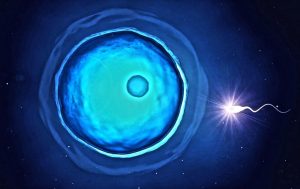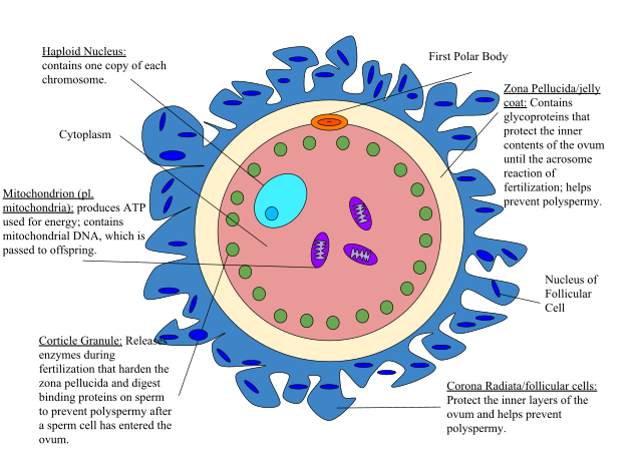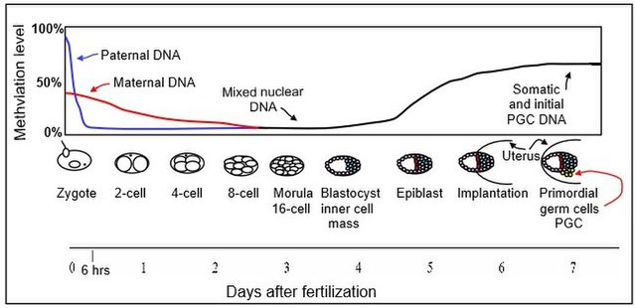Nancy’s Health: In Vitro Fertilization
Wanting to Conceive
- Nancy is now in her early 30’s
- She came to the point in her life where she wanted to have a baby
- Paul & Nancy tried to conceive for a number of years
- Nancy was unsure as ‘whose fault’ it was (Paul had adopted children from his first marriage)
- The fertility specialist suggested IVF (in vitro fertilization)
- IVF is the most effective form of assisted reproductive technology
- Chances of conceiving using IVF depend on many factors (e.g. age & cause of infertility)
- Can be time-consuming, expensive & invasive
Overview
- During IVF, eggs are removed from mature follicles within an ovary
- An egg is fertilized by injecting a single sperm into the egg or mixing the egg with sperm in a petri dish
- The fertilized egg (embryo) is transferred into the uterus
Why IVF?
- Fallopian tube damage or blockage
- Ovulation disorders
- Endometriosis
- Uterine fibroids
- Previous tubal sterilization or removal
- Impaired sperm production or function
- Unexplained infertility
- A genetic disorder
- Fertility preservation for cancer or other health conditions
Risks
Multiple births
IVF increases the risk of multiple births if more than one embryo is transferred to your uterus. A pregnancy with multiple fetuses carries a higher risk of early labor and low birth weight than pregnancy with a single fetus does.
Premature delivery and low birth weight
Research suggests that IVF slightly increases the risk that the baby will be born early or with a low birth weight.
Ovarian hyper stimulation syndrome
Use of injectable fertility drugs, such as human chorionic gonadotropin (HCG), to induce ovulation can cause ovarian hyper stimulation syndrome, in which your ovaries become swollen and painful.
Symptoms typically last a week and include mild abdominal pain, bloating, nausea, vomiting and diarrhea. If you become pregnant, however, your symptoms might last several weeks. Rarely, it’s possible to develop a more severe form of ovarian hyper stimulation syndrome that can also cause rapid weight gain and shortness of breath.
Miscarriage
The rate of miscarriage for women who conceive using IVF with fresh embryos is similar to that of women who conceive naturally — about 15% to 25% — but the rate increases with maternal age.
Egg-retrieval procedure complications
Use of an aspirating needle to collect eggs could possibly cause bleeding, infection or damage to the bowel, bladder or a blood vessel. Risks are also associated with sedation and general anesthesia, if used.
Ectopic pregnancy
About 2% to 5% of women who use IVF will have an ectopic pregnancy — when the fertilized egg implants outside the uterus, usually in a fallopian tube. The fertilized egg can’t survive outside the uterus, and there’s no way to continue the pregnancy.
Birth defects
The age of the mother is the primary risk factor in the development of birth defects, no matter how the child is conceived. More research is needed to determine whether babies conceived using IVF might be at increased risk of certain birth defects.
Cancer
Although some early studies suggested there may be a link between certain medications used to stimulate egg growth and the development of a specific type of ovarian tumor, more-recent studies do not support these findings. There does not appear to be a significantly increased risk of breast, endometrial, cervical or ovarian cancer after IVF.
Stress
Use of IVF can be financially, physically and emotionally draining. Support from counselors, family and friends can help you and your partner through the ups and downs of infertility treatment.
Preparing for IVF
Ovarian reserve testing
To determine the quantity and quality of your eggs, your doctor might test the concentration of follicle-stimulating hormone (FSH), estradiol (estrogen) and anti-mullerian hormone in your blood during the first few days of your menstrual cycle. Test results, often used together with an ultrasound of your ovaries, can help predict how your ovaries will respond to fertility medication.
Semen analysis
If not done as part of your initial fertility evaluation, your doctor will conduct a semen analysis shortly before the start of an IVF treatment cycle.
Infectious disease screening
You and your partner will both be screened for infectious diseases, including HIV.
Practice (mock) embryo transfer
Your doctor might conduct a mock embryo transfer to determine the depth of your uterine cavity and the technique most likely to successfully place the embryos into your uterus.
Uterine exam
Your doctor will examine the inside lining of the uterus before you start IVF. This might involve a sonohysterography — in which fluid is injected through the cervix into your uterus — and an ultrasound to create images of your uterine cavity. Or it might include a hysteroscopy — in which a thin, flexible, lighted telescope (hysteroscope) is inserted through your vagina and cervix into your uterus.

Important questions to discuss prior to beginning a cycle of IVF:
- How many embryos will be transferred?
- What will you do with any extra embryos?
- How will you handle a multiple pregnancy?
- Have you considered the potential complications associated with using donor eggs, sperm or embryos, or a gestational carrier?
What to Expect
Ovulation induction
At the start of a cycle, synthetic hormones are given to stimulate the ovaries to produce multiple eggs-rather than the single egg that normally develops each month.
Multiple eggs are needed, some eggs won’t fertilize or develop normally after fertilization.
Different medications that may be needed:
Medications for ovarian stimulation
- To stimulate your ovaries, you might receive an injectable medication containing a follicle-stimulating hormone (FSH), a luteinizing hormone (LH) or a combination of both. These medications stimulate more than one egg to develop at a time.
Medications for oocyte maturation
- When the follicles are ready for egg retrieval — generally after eight to 14 days — you will take human chorionic gonadotropin (HCG) or other medications to help the eggs mature.
Medications to prevent premature ovulation
- These medications prevent your body from releasing the developing eggs too soon.
Medications to prepare the lining of your uterus
- On the day of egg retrieval or at the time of embryo transfer, your doctor might recommend that you begin taking progesterone supplements to make the lining of your uterus more receptive to implantation.
- Three days after fertilization, a normally developing embryo will contain about six to 10 cells.
- By the fifth or sixth day, the fertilized egg is known as a blastocyst — a rapidly dividing ball of cells.
- The inner group of cells will become the embryo.
- The outer group will become the cells that nourish and protect it.
After the Procedure
After the embryo transfer, you can resume normal daily activities. However, your ovaries may still be enlarged. Consider avoiding vigorous activity, which could cause discomfort.
Typical side effects include:
- Passing a small amount of clear or bloody fluid shortly after the procedure — due to the swabbing of the cervix before the embryo transfer
- Breast tenderness due to high estrogen levels
- Mild bloating
- Mild cramping
- Constipation
If you develop moderate or severe pain after the embryo transfer, contact your doctor. He or she will evaluate you for complications such as infection, twisting of an ovary (ovarian torsion) and severe ovarian hyperstimulation syndrome.
About 12-14 days after egg retrieval, a blood test will detect whether you are pregnant




